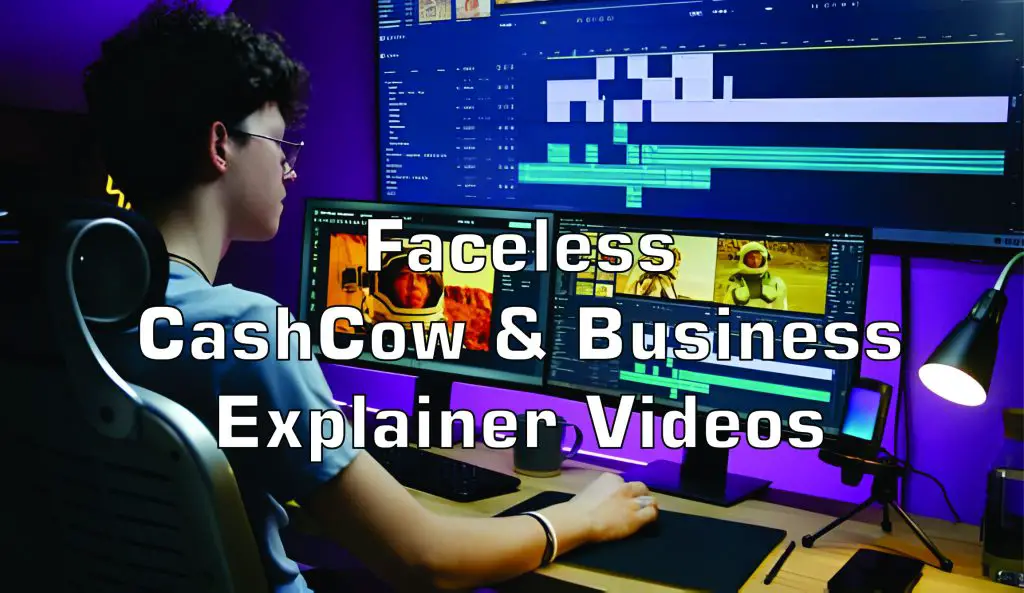

I hope you enjoy reading this blog post.
If you want my team to just do your marketing for you, click here.
Video has emerged as a powerful marketing tool for businesses to connect with their audience, drive engagement, and boost sales. With the ever-changing landscape of online marketing, having a strategic approach to video marketing is more crucial than ever. In this ultimate guide, we’ll explore the ins and outs of video marketing strategy in 2024, providing you with actionable insights to elevate your marketing efforts to the next level.
Video marketing has become an integral part of the digital marketing ecosystem with its ability to convey messages in a visually captivating and engaging manner. In 2024, the importance of video marketing strategy cannot be overstated. As consumer preferences continue to evolve, businesses must adapt their marketing strategies to meet the demands of today’s digital-savvy audience.
Understanding Video Marketing Strategy
What is Video Marketing Strategy?
At its core, video marketing strategy involves the deliberate planning and execution of video content to achieve specific marketing objectives. It encompasses everything from identifying target audiences to crafting compelling video content and measuring campaign performance.
Importance of Video Marketing
Video marketing has become an indispensable tool for businesses in today’s digital landscape. Here are several reasons why incorporating video into your marketing strategy is crucial for success:
- Enhanced Engagement: Video content is highly engaging and captures viewers’ attention more effectively than text or static images. With captivating visuals, sound, and storytelling, videos can create an emotional connection with your audience, leading to increased engagement and brand recall.
- Improved Conversion Rates: Video has the power to influence purchasing decisions and drive conversions. Showcasing your products or services in action, addressing customer pain points, or providing valuable information can guide viewers through the sales funnel and encourage them to take action.
- Increased Reach and Visibility: With the rise of social media and video-sharing platforms, such as YouTube, Facebook, Instagram, and TikTok, video content has unparalleled reach and potential for virality. You can extend your brand’s reach to a wider audience and increase brand visibility by leveraging these platforms.
- SEO Benefits: Video content can significantly improve your search engine optimization (SEO) efforts. Search engines like Google prioritize video content in search results, giving your website a better chance of ranking higher. Additionally, videos often result in longer dwell times and lower bounce rates, which are favorable signals for search engine algorithms.
- Demonstrating Expertise and Authority: Through informative and educational videos, you can position your brand as an authority in your industry. Sharing valuable insights, tips, and advice can build trust and credibility with your audience, establishing your brand as a go-to resource for relevant information.
- Better Storytelling: Video allows you to convey complex messages and narratives in a visually compelling and easily digestible format. Whether you’re sharing customer testimonials, showcasing your company culture, or explaining your product’s features, video enables you to tell your brand’s story in a memorable and impactful way.
- Adaptation to Consumer Preferences: Consumers increasingly prefer consuming content in video format. Aligning with consumer preferences and delivering content in the format they prefer can better engage with your target audience and stay relevant in a competitive marketplace.
- Measurable Results: Video marketing offers robust analytics and insights that allow you to track the performance of your campaigns accurately. From view counts and engagement metrics to conversion rates and ROI, you can measure the effectiveness of your video content and optimize your strategies accordingly.
Key Video Marketing Statistics
Video marketing has emerged as the new powerful tool for businesses to engage their audience, drive conversions, and boost brand awareness. Here are some compelling statistics that highlight the importance and effectiveness of video marketing:
- Increased Engagement: Videos on social media platforms generate 1200% more shares than text and image content combined. (Source: G2)
- Growing Popularity of Video Content: 86% of businesses use video as a marketing tool, up from 63% in 2017. (Source: Wyzowl)
- Consumer Preference: 72% of consumers prefer learning about a product or service through video. (Source: HubSpot)
- Mobile Consumption: Mobile video consumption rises by 100% every year. (Source: Insivia)
- Higher Conversion Rates: Including a video on a landing page can increase conversion rates by 80%. (Source: Unbounce)
- YouTube Dominance: YouTube has 2.70 billion monthly active users based all around the world, making it the second most visited website in the world. (Source: https://YouTube.com)
- Effectiveness of Video Ads: Video ads have an average click-through rate (CTR) of 1.84%, higher than any other digital ad format. (Source: WordStream)
- Influence on Purchase Decisions: 64% of consumers make a purchase after watching branded social videos. (Source: Tubular Insights)
- Video SEO Impact: Videos are 53 times more likely to rank on the first page of Google search results than text-based content. (Source: Insivia)
- Retention Rates: Viewers retain 95% of a message when they watch it in a video, compared to 10% when reading it in text. (Source: Insivia)
- Email Marketing Effectiveness: Including the word “video” in an email subject line can increase open rates by 19% and click-through rates by 65%. (Source: HubSpot)
- Social Media Engagement: Social media videos generate 1200% more shares than text and image content combined. (Source: G2)
These statistics underscore the significant impact that video marketing can have on brand visibility, audience engagement, and business growth. Using video as part of your marketing strategy can help you connect with your target audience more effectively and achieve your business objectives.

My Agency can Help You Make Money Online
Cashcow Videos - we create engaging faceless cashcow and business explainer videos that earn passive income.
Monetized Blogs - select from our list of ready-made niche blogs that are already approved for monetization.
Business or Website Traffic - using various digital marketing strategies, we drive massive amounts of targeted traffic to your website.
Building Your Video Marketing Strategy
Tips for Developing a Comprehensive Video Marketing Strategy
- Know Your Audience: Take the time to research and understand your target audience’s preferences, interests, and pain points. This will enable you to create video content that resonates with them on a personal level.
- Set Clear Objectives: Define clear, measurable goals for your video marketing efforts, whether it’s increasing brand awareness, driving website traffic, or boosting sales. Having clear objectives will guide your content creation and measurement efforts.
- Choose the Right Platforms: Identify the platforms where your target audience is most active and tailor your video content to suit each platform’s unique audience and format.
Audience Targeting and Segmentation Strategies
Segmenting your audience allows you to deliver highly targeted video content that speaks directly to the needs and preferences of different audience segments. Dividing your audience into distinct groups based on demographics, interests, and behavior can create personalized video content that resonates with each segment on a deeper level.
Video Content Creation Process
Creating compelling video content requires careful planning, scripting, filming, and editing. Here are some tips for each stage of the video content creation process:
- Planning: Start by defining the purpose and goals of your video, as well as the key messages you want to convey. Create a storyboard or outline to map out the structure and flow of your video.
- Scripting: Write a clear and concise script that captures the viewer’s attention from the start and conveys your message effectively. Keep your script focused and to the point, and use language that resonates with your target audience.
- Filming: Pay attention to lighting, sound, and composition to ensure your video looks and sounds professional. Use high-quality equipment and consider hiring professional videographers or actors if necessary.
- Editing: Use video editing software to polish your footage, add transitions and effects, and optimize the overall look and feel of your video. Keep your editing style consistent with your brand identity and messaging.
Types of Marketing Videos
There are various types of marketing videos, each serving a different purpose and catering to different audience preferences.
- Explainer Videos: These videos are designed to educate and inform viewers about a specific topic, product, or service.
- Product Demonstrations: Showcase your products or services in action, highlighting their features, benefits, and unique selling points.
- Testimonials and Case Studies: Share customer testimonials and success stories to build trust and credibility with your audience.
- Behind-the-Scenes Content: Take viewers behind the scenes of your business or production process to give them a glimpse into your company’s culture and values.
- How-To Guides and Tutorials: Provide valuable information and practical tips to help viewers solve a problem or achieve a specific goal.
- Faceless Videos: Faceless videos are a unique type of marketing content where the focus is on the message rather than the individual delivering it. Removing the presence of a human face can make these videos appeal to a wider audience and allow viewers to focus solely on the content being presented. Faceless videos are particularly effective for topics where the identity of the speaker is not relevant or may distract from the message, such as tutorials, animations, or explainer videos.
Video Distribution Channels and Platforms
Choosing the right distribution channels and platforms is essential for maximizing the reach and impact of your video marketing efforts. Here are some popular platforms for distributing marketing videos:
- YouTube: The world’s largest video-sharing platform, with over 2 billion monthly active users.
- TikTok: A rapidly growing platform for short-form video content, particularly popular among younger audiences.
- Instagram: A visually-oriented platform ideal for sharing engaging video content, stories, and reels.
- LinkedIn: A professional networking platform where businesses can share thought leadership content and industry insights through video.
Video SEO and Optimization
Optimizing your videos for search engines is crucial for improving their visibility and reach. Here are some tips for video SEO and optimization:
- Keyword Research: Identify relevant keywords and phrases related to your video content and incorporate them into your video titles, descriptions, and tags.
- Metadata Optimization: Write descriptive titles and detailed descriptions for your videos, including relevant keywords and key phrases. Use tags to categorize your videos and make them easier to find.
- Thumbnail Optimization: Create eye-catching thumbnails that grab viewers’ attention and encourage them to click on your videos. Use high-quality images and clear, legible text to make your thumbnails stand out in search results.
Measuring Success
Tracking and analyzing the performance of your video marketing campaigns is essential for determining their effectiveness and identifying areas for improvement. Here are some key metrics to consider:
- Views: The number of times your video has been viewed by users.
- Engagement: Metrics such as likes, comments, shares, and click-through rates indicate how actively engaged your audience is with your video content.
- Conversion Rate: The percentage of viewers who take a desired action after watching your video, such as signing up for a newsletter or making a purchase.
Budgeting and Resource Allocation
Effective budgeting and resource allocation are critical for maximizing the impact of your video marketing efforts. Here are some tips for budgeting and resource allocation:
- Allocate Resources Wisely: Determine how much time, money, and manpower you can realistically allocate to your video marketing efforts and prioritize accordingly.
- Invest in Quality: While it’s essential to work within your budget, don’t skimp on quality when it comes to video production. Invest in high-quality equipment, software, and talent to ensure your videos are professional and engaging.
- Track Expenses: Keep track of your video marketing expenses and regularly review your budget to ensure you’re staying on track and making the most of your resources.
Trends and Innovations in Video Marketing
The world of video marketing is constantly evolving, with new trends and innovations emerging all the time. Here are some key trends to watch out for in 2024 and beyond:
- Live Video: The rise of live streaming platforms like Facebook Live and Instagram Live has made live video a powerful tool for engaging audiences in real time.
- Interactive Video: Interactive videos that allow viewers to engage with content through quizzes, polls, and clickable elements are becoming increasingly popular.
- Personalized Video: Advances in technology have made it easier than ever to create personalized video content tailored to individual viewer preferences and behaviors.
Social Video Marketing
Social video marketing involves leveraging video content on social media platforms to engage with audiences, build brand awareness, and drive conversions. With the increasing popularity of social media platforms such as Facebook, Instagram, Twitter, LinkedIn, and TikTok, video has become a dominant form of content consumption.
Here are some key aspects of social video marketing:
- Platform-specific Content: Each social media platform has its own unique audience demographics, content formats, and engagement behaviors. Social video marketers tailor their content to each platform’s specifications to optimize reach and engagement. For example, short-form videos may perform well on platforms like TikTok and Instagram Stories, while longer-form videos may be better suited for platforms like YouTube and Facebook.
- Engagement and Interaction: Social video content encourages audience engagement through likes, comments, shares, and interactions. Marketers leverage these interactions to foster community engagement, spark conversations, and build relationships with their audience. Interactive features such as polls, quizzes, and live streaming further enhance engagement and encourage participation.
- Storytelling and Brand Narrative: Social video marketing allows brands to tell their story and convey their brand message compellingly and authentically. Through visual storytelling, brands can showcase their values, mission, and personality, resonating with their audience on a deeper level. By humanizing their brand and connecting with their audience on an emotional level, brands can build trust and loyalty over time.
- Virality and Shareability: Social media platforms are inherently viral, with content easily shared and amplified by users. Social video marketers leverage the power of virality and shareability to expand their reach and increase brand visibility. By creating engaging and share-worthy content, brands can tap into their audience’s networks and reach new audiences organically.
- Data and Analytics: Social media platforms provide robust analytics and insights that enable marketers to track the performance of their video content. Metrics such as views, watch time, engagement rate, and audience demographics help marketers understand what content resonates with their audience and optimize their strategies accordingly. By analyzing these metrics, marketers can refine their targeting, messaging, and content strategy to drive better results.
Working with Video Marketing Agencies

Partnering with a video marketing agency like imArena can be an effective way to take your video marketing efforts to the next level. They do all the heavy lifting, and you benefit from their video editing skills. Here are some benefits of working with a video marketing agency:
- Expertise and Experience: Video marketing agencies have the expertise and experience needed to create high-quality, engaging video content that resonates with your target audience.
- Access to Resources: Agencies have access to a wide range of resources, including professional videographers, editors, and equipment, allowing them to create top-notch video content.
- Time and Cost Savings: Outsourcing your video marketing efforts to an agency can save you time and money compared to hiring an in-house team or attempting to create videos yourself.
Conclusion
In conclusion, video marketing strategy is a powerful tool for businesses looking to connect with their audience, drive engagement, and boost sales. With the key principles outlined in this comprehensive guide, businesses can create compelling video content that resonates with their audience and drives real results. Are you just getting started with video marketing or looking to take your efforts to the next level? The ultimate guide to video marketing strategy in 2024 has everything you need to succeed.




